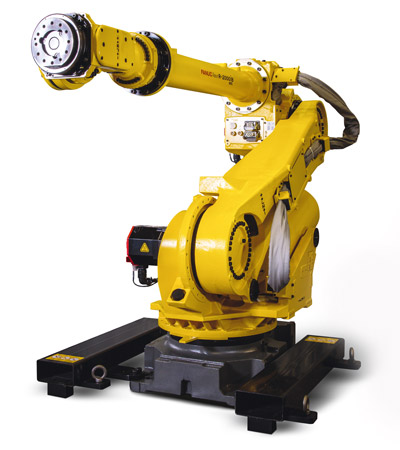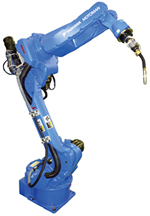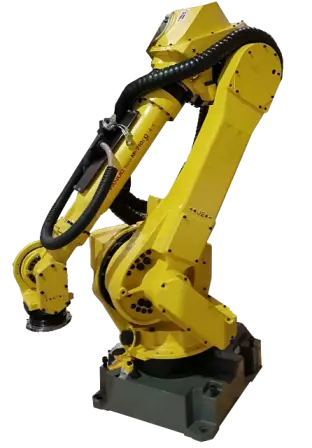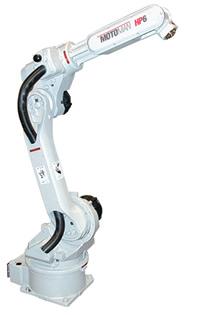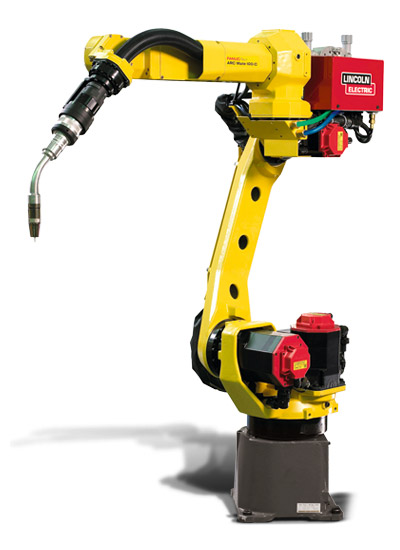Programming is a key aspect to any robotic system. It relays vital information to an industrial robot making it capable of functioning and carrying out specific tasks. Robotic programming was once viewed as daunting as it required complex lines of code. Fortunately, advancements in robotics has led to the development of more intuitive programming methods that are user friendly to even the most novice of operators. Today the most common programming methods for industrial robots are teach pendants, offline simulation, and lead through demonstration.
Teach Pendants
Teach pendants are the most common method of industrial robot programming. Over 90% of robots are programmed with teach pendants. Pendants are handheld devices containing several buttons, switches, or a touchscreen and are typically part of a robot’s control system. Many of the newer FANUC teach pendants feature a touch screen. Programming through teach pendants involves an operator inputting commands through the pendant’s keyboard. Many robot applications can be programed with pendants. For instance, a FANUC R-2000ib can be programmed to weld car frames. While a FANUC Lr Mate 200id is capable of locating parts to be placed on a conveyor due to the instructions relayed to it through an operator’s input using a teach pendant.Teach pendants provide many advantages when it comes to robot programming. Since they are the most common programming method most technicians are familiar with them, so little training may be required. In addition, the vast majority of industrial robots come with teach pendants making it easy to get robots up and running without needing to purchase or integrate additional programming software. Another advantage of these devices is that they allow for specific positioning. The ABB IRB 2600 can accurately locate workpieces for assembly applications because of the precise coordinates relayed to it through its teach pendant.
Offline Programming
When automating with robots another robot programming method that can be utilized is offline programming. Offline programming is also referred to as simulation and is mostly utilized in robotic research. Offline programming is beneficial as it ensures control algorithms function properly before being tested with the robot itself. During this method a simulation is created virtually of an industrial robot and the desired application. For example, a technician may create a mockup of a ABB IRB 6640 palletizing boxes through simulation software on his or her computer. Adjustments and reconfigurations can be made to the application simulation before running the program live, ensuring programming accuracy. Once a technician is satisfied with the program it can then be downloaded to the robot. Offline programming provides the least amount of disruption to manufacturing operations which is why it is gaining in popularity despite still being relatively new to robotics. This is another factor of how robots are creating more jobsLead Through
Lead through methods involve programming robots through demonstration. During this process an operator physically moves a robot through a desired task. This method has declined in popularity with traditional industrial robots as many have become too large or heavy to physically manipulate their robotic arms. However, this method has gained popularity for programming collaborative robots. Cobots are designed for human interaction and are typically smaller and lighter making them easier to manipulate. The FANUC Cr-35ia is one example of a collaborative robot that uses demonstration programming.Lead through programming is best for detailed applications as it simplifies programming by eliminating the need to write several lines of complex code. It is also faster than other programming methods but is not suited for simple or straightforward applications.
Robots Done Right is the place to start when it comes to used robots. Contact us if you are interested in buying or selling your used robot.
